The chance to swim with the world’s biggest fish drew tourists to a Philippines town, but conservation groups denounce the hand-feeding that keeps the gentle creatures around.
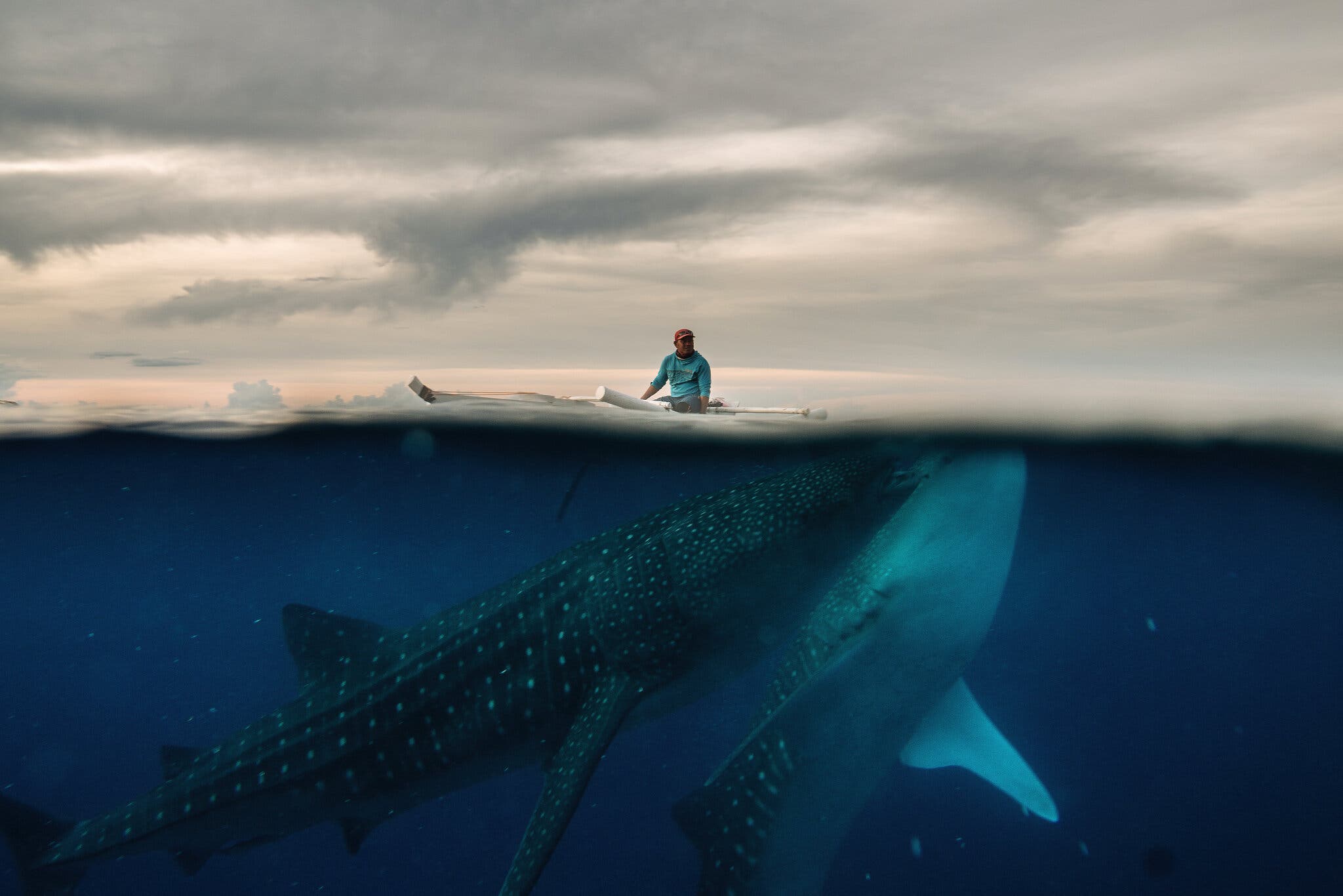
Credits: A fisherman feeding whale sharks in the waters around Tan-Awan, a small town in Cebu.Credit...Hannah Reyes Morales for The New York Times
Photographs and Text by Hannah Reyes Morales
Oct. 24, 2021
TAN-AWAN, Philippines — In the predawn light, Lorene de Guzman paddles out to sea in his tiny wooden outrigger to hand-feed the giants living in the water.One of the behemoths, a whale shark known as 180, swims up, its enormous mouth gliding across the surface of the still ocean.
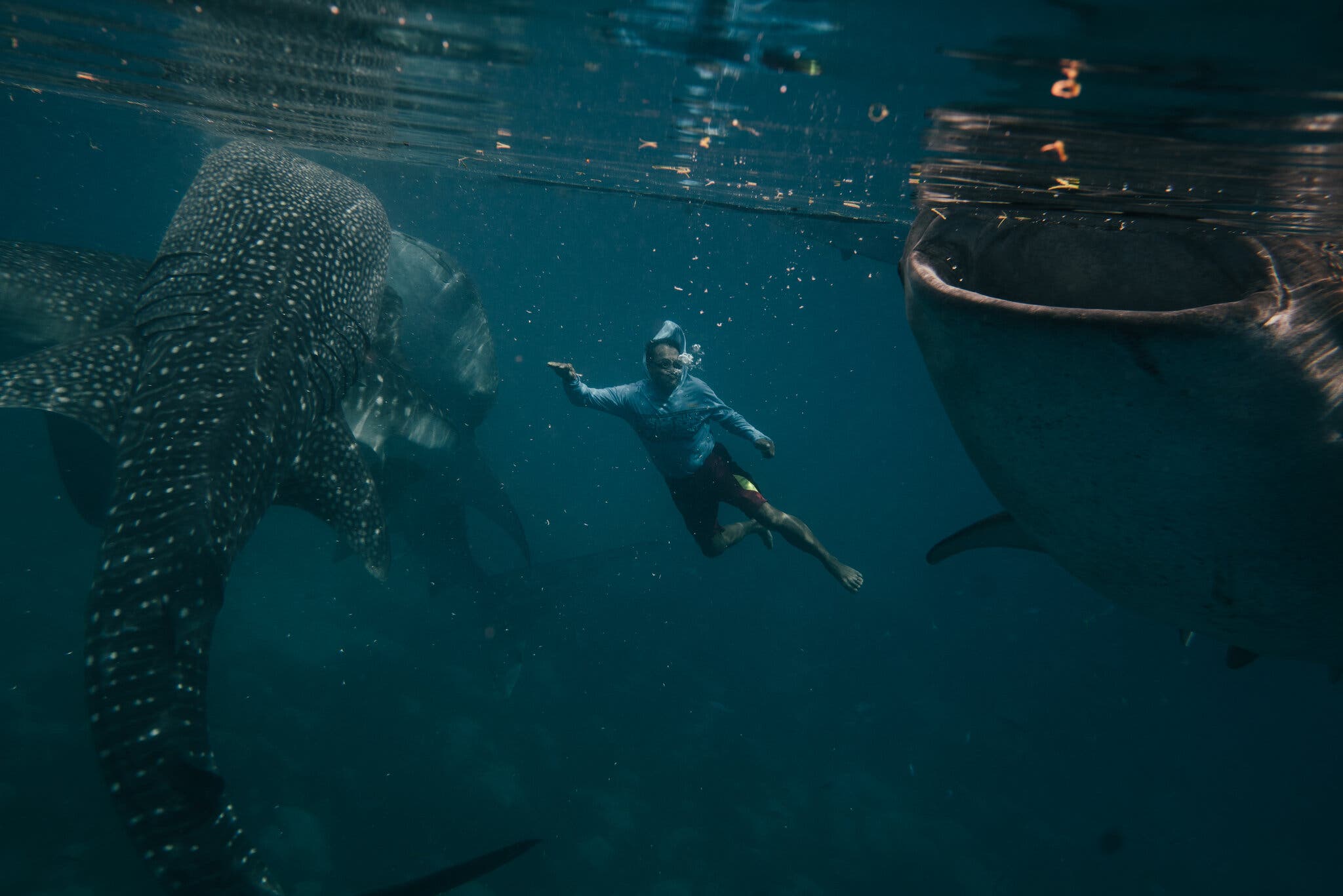
Swimming with whale sharks in Cebu Province in the Philippines.Credit...Hannah Reyes Morales for The New York Times
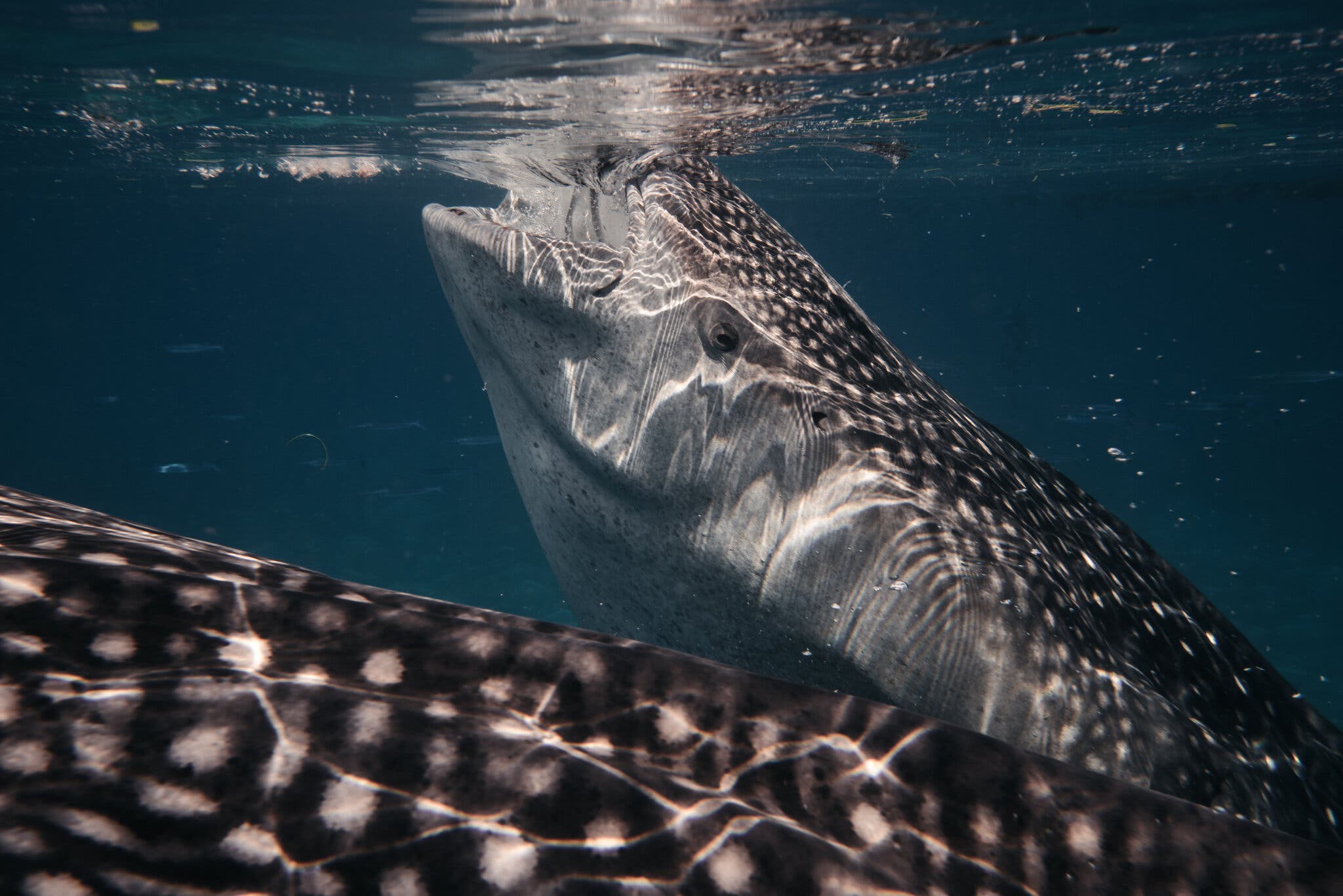
Each whale shark has a unique constellation of spots, which bear a resemblance to stars in the night sky.
Posing no threat and often frequenting coastal areas, whale sharks and people have long been meeting, often to the animals’ detriment. “The accessibility makes them quite a good target species,” said Ariana Agustines, a marine biologist who has researched the whale shark populations in the Philippines. “In terms of hunting, unfortunately, in the past; and tourism now in the present.”

The chance to see whale sharks led to a tourism boom in Oslob, the municipality of which Tan-Awan is a part.
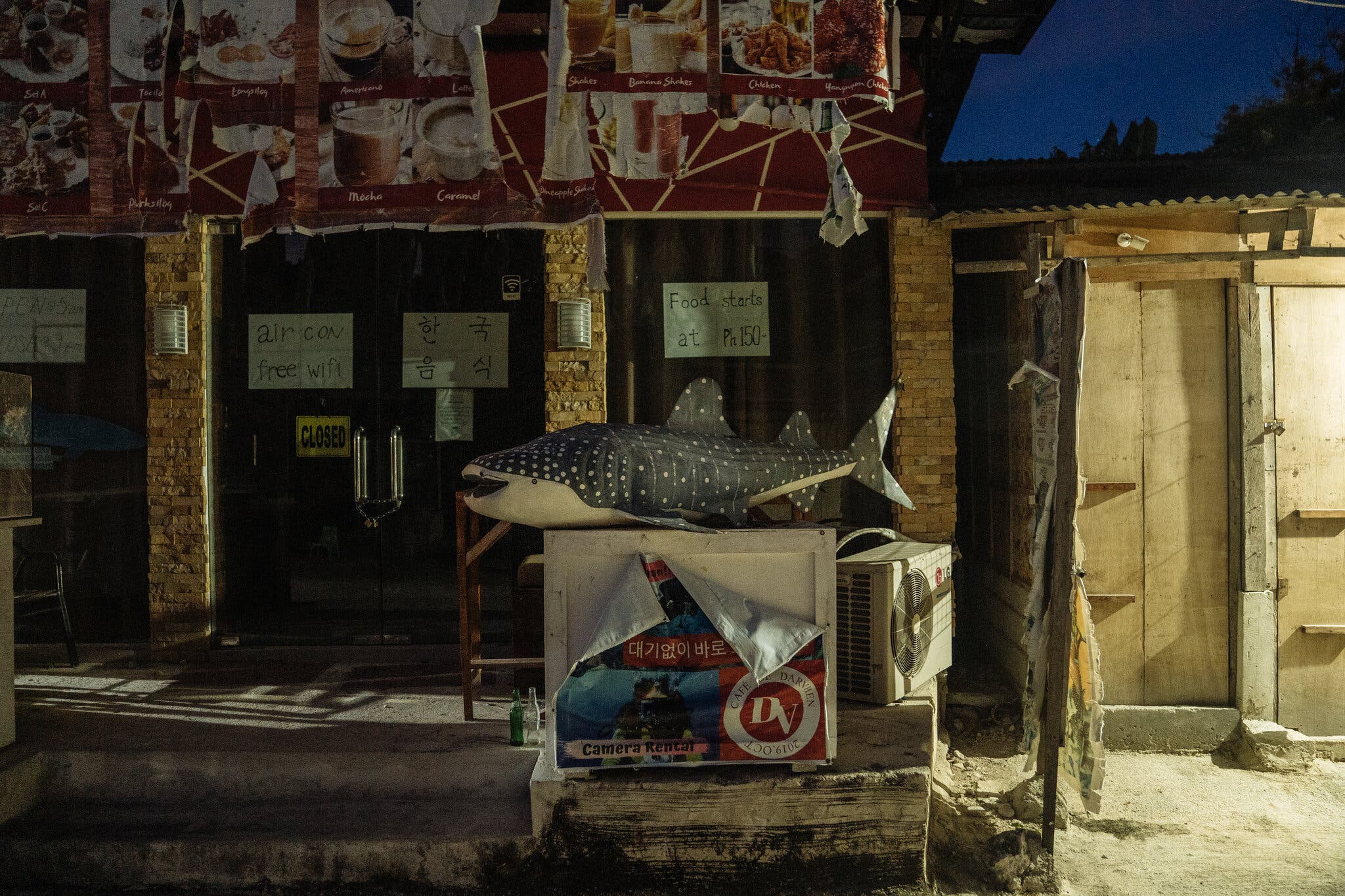
The pandemic all but stopped international tourism, leading to boarded-up shops and restaurants.
But the appeal to tourists of a practically guaranteed sighting means Tan-Awan residents have no intention of abandoning the feeding practice, despite the growing pressure to stop. The tourism money means too much, with whale shark encounters bringing some $3.5 million into the area in 2019. 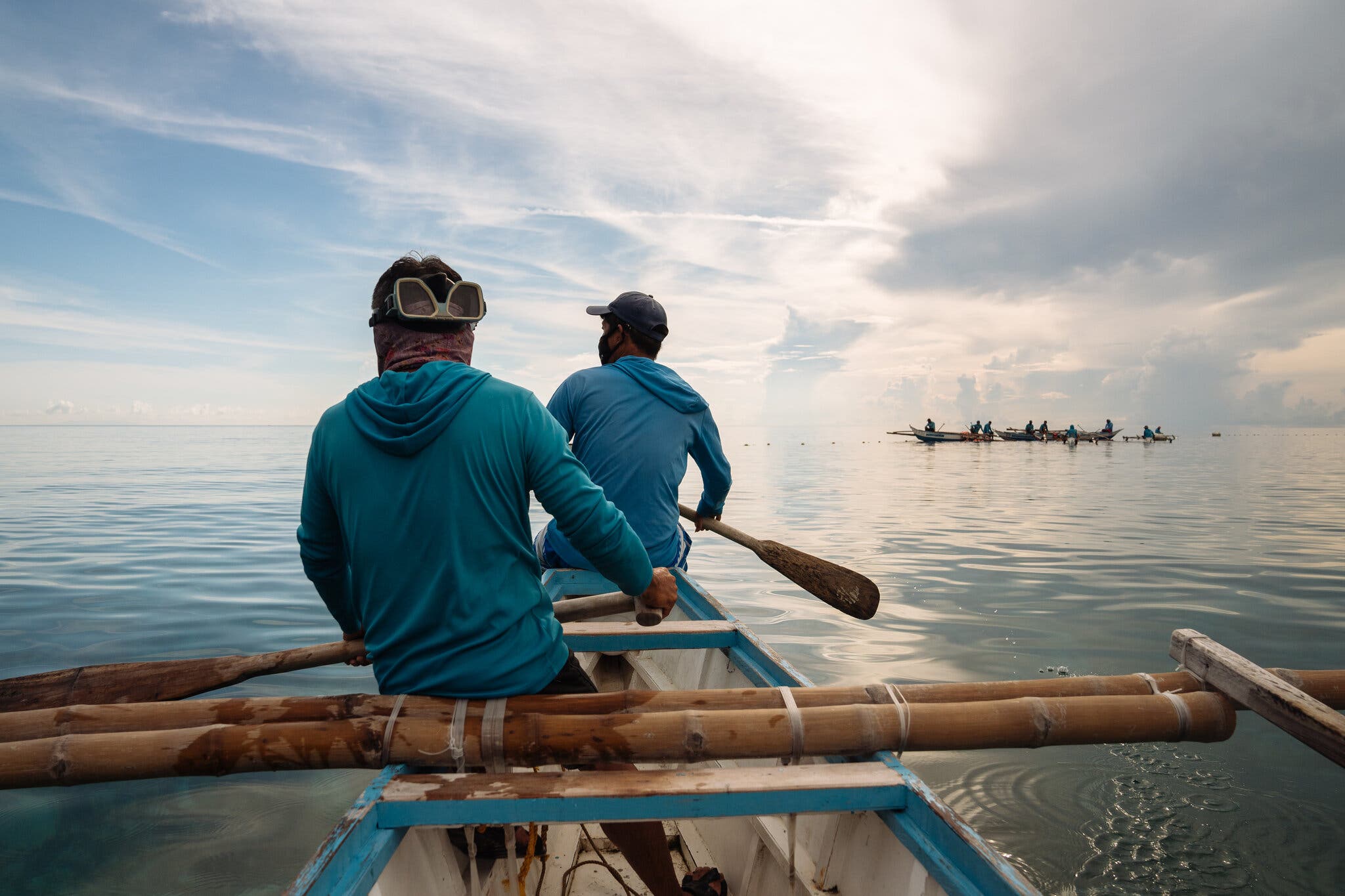
Paddling out to a whale shark encounter area.
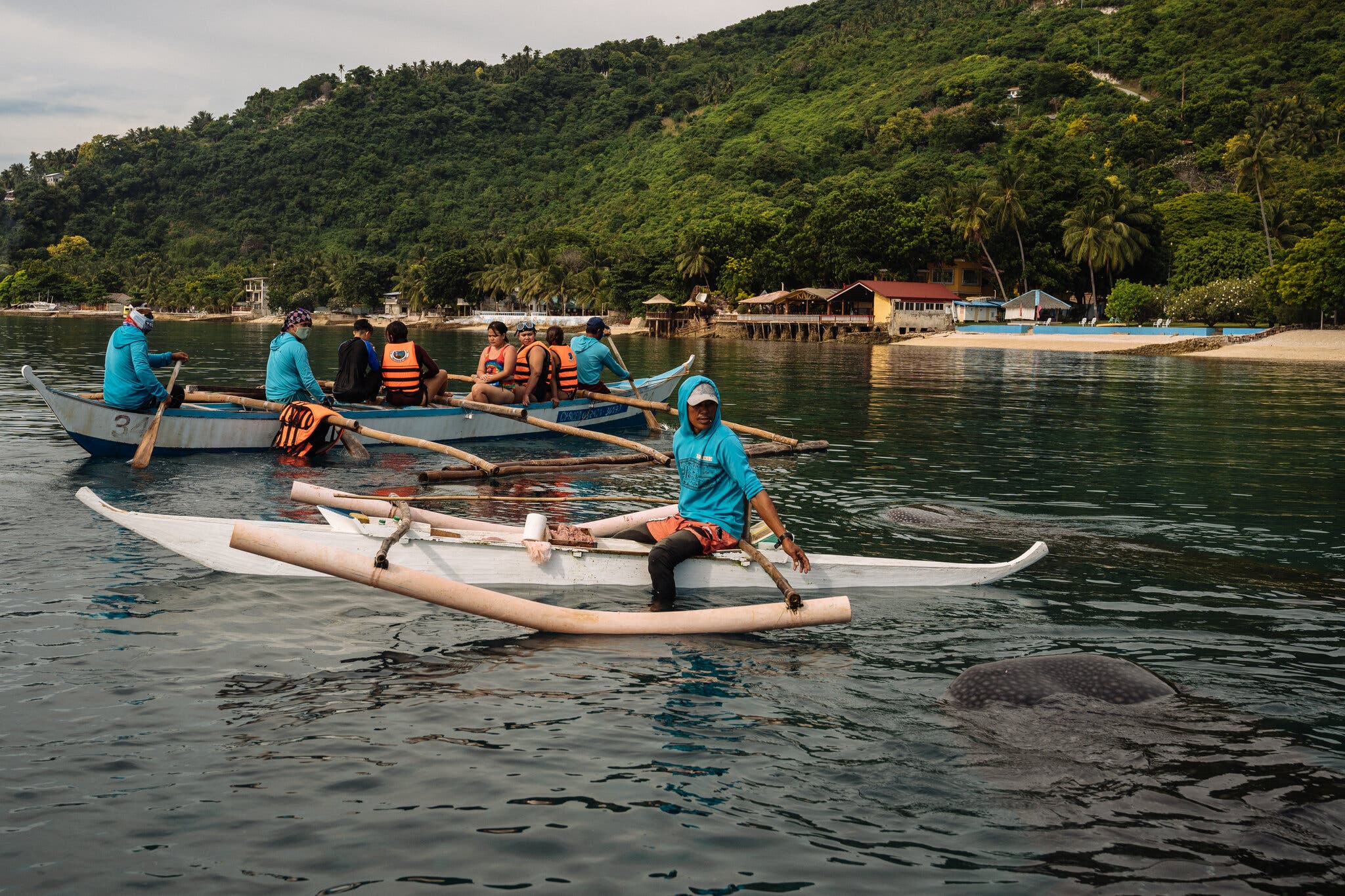
Some tourism traffic from visitors within the Philippines has begun to return.
The affection is made easier both by the sharks’ agreeable nature and by how readily identifiable individuals are.Mr. Soriano started baiting the whale sharks with uyap. More fishermen followed suit. They formed an association of sea wardens responsible for both feeding the sharks and ferrying the tourists to see them. Visitors posted their whale shark selfies on social media. Suddenly, the local waters were crowded with visitors.
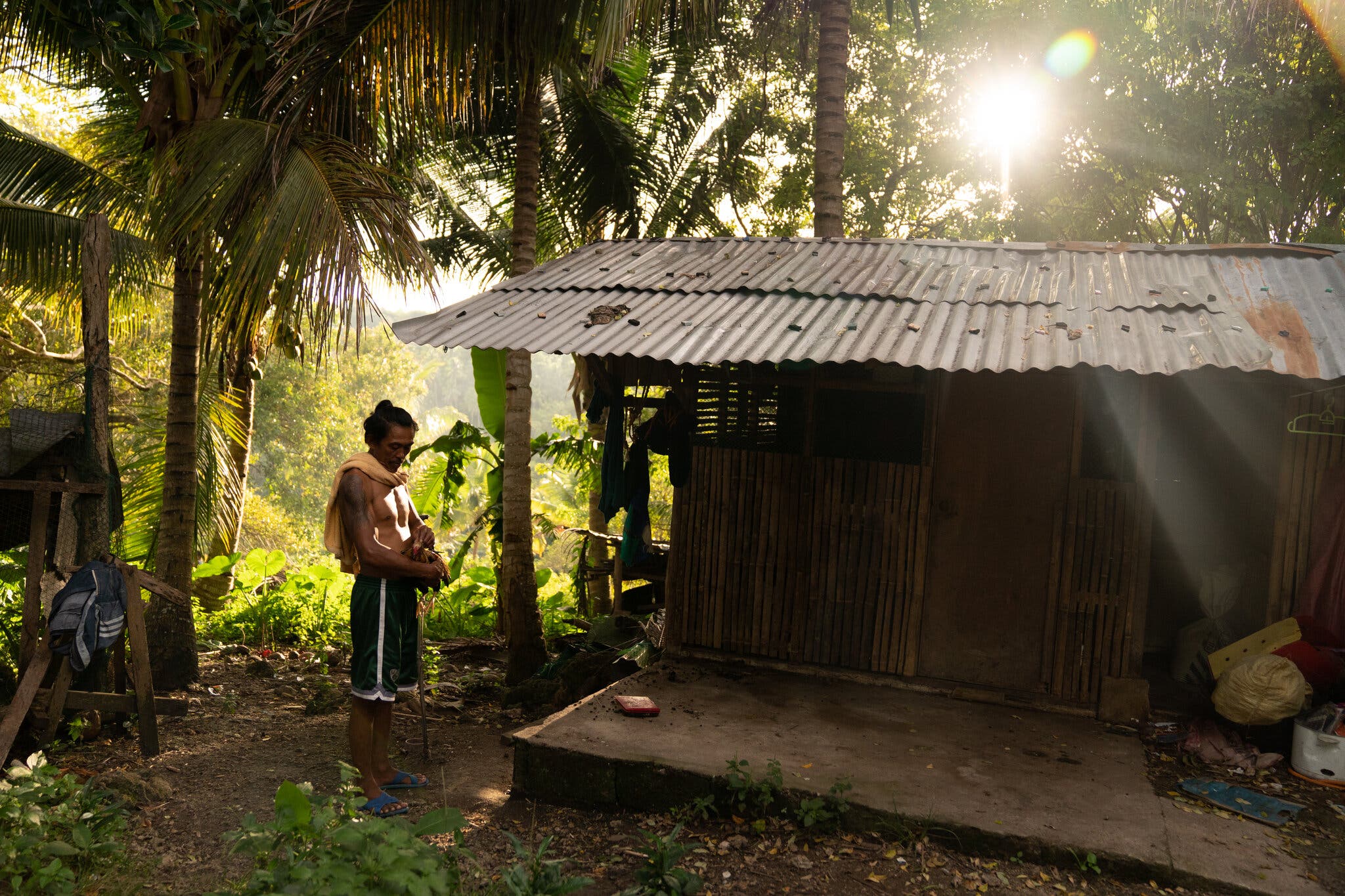
Lorene de Guzman rebuilt his home with whale shark tourism money, adding concrete to what had been a hut constructed mostly of nipa, a species of palm.
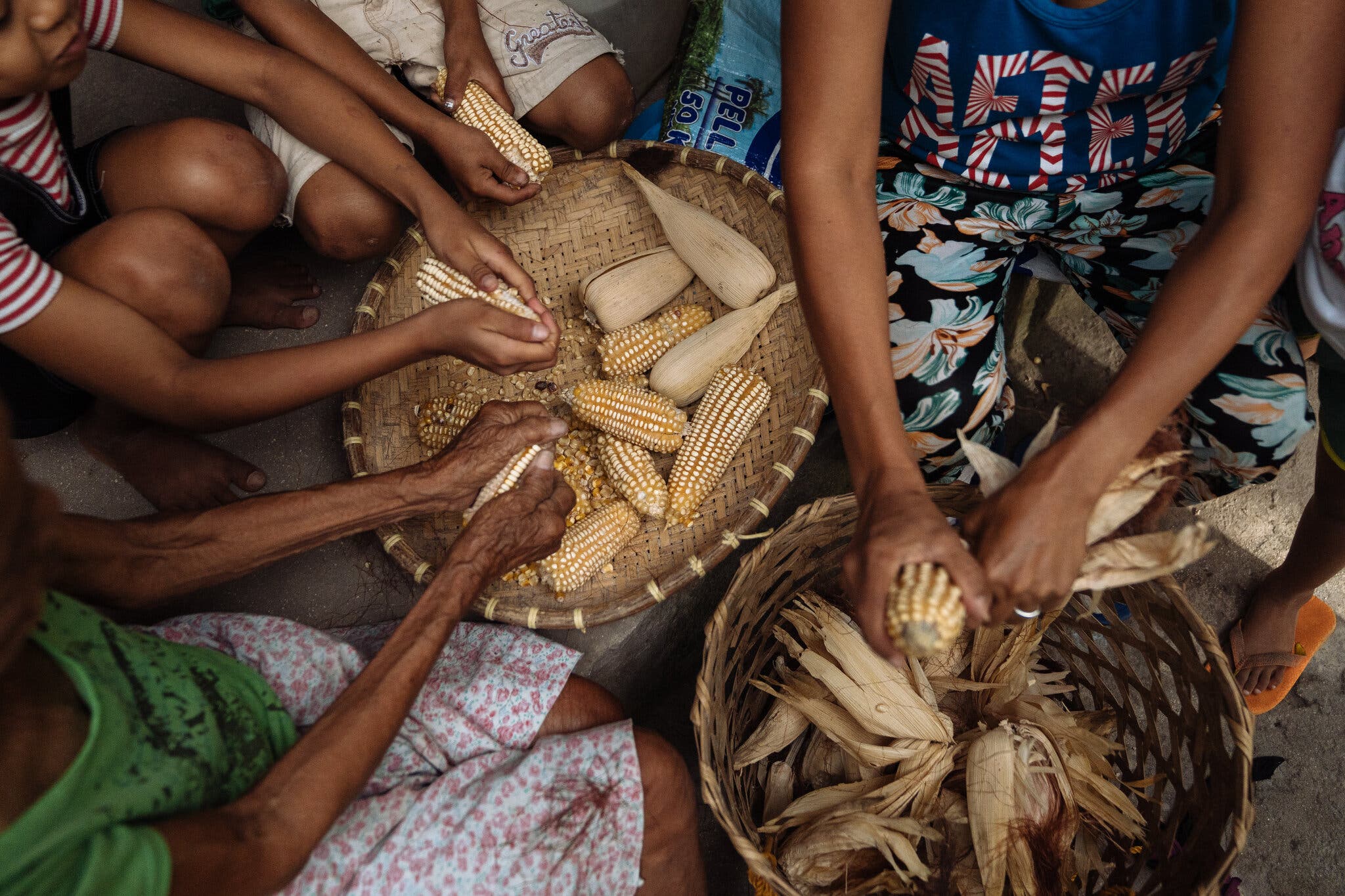
The de Guzman family, which has been struggling with the lack of tourism income, preparing a meal at home.
The quiet town lit up with resorts and restaurants. Younger residents stayed to work in Tan-Awan, instead of migrating to the city or abroad. Mr. De Guzman’s income doubled, then tripled, and he rebuilt his home. The area’s only high school opened.
But the provisioning practice has come under strong criticism, with the World Wildlife Fund only one of many conservation organizations faulting the idea of whale shark feeding and urging tourists in the Philippines to go instead to Donsol, a non-provisioned site, to see them.
Almost 1,900 whale sharks have been identified in Philippine waters, the second-largest known population in the world. Scientists give individual whales numbers for names.
Globally, the whale shark population has been more than halved over the past 75 years, and their decline in the Indo-Pacific region has been even more rapid, at 63 percent, statistics that prompted their listing in 2016 as an endangered species.
Mark Rendon, the president of the sea wardens, is aware of the criticism but is unmoved. “We know the whale sharks better than they do,” he said of the efforts by conservationists to end the practice.
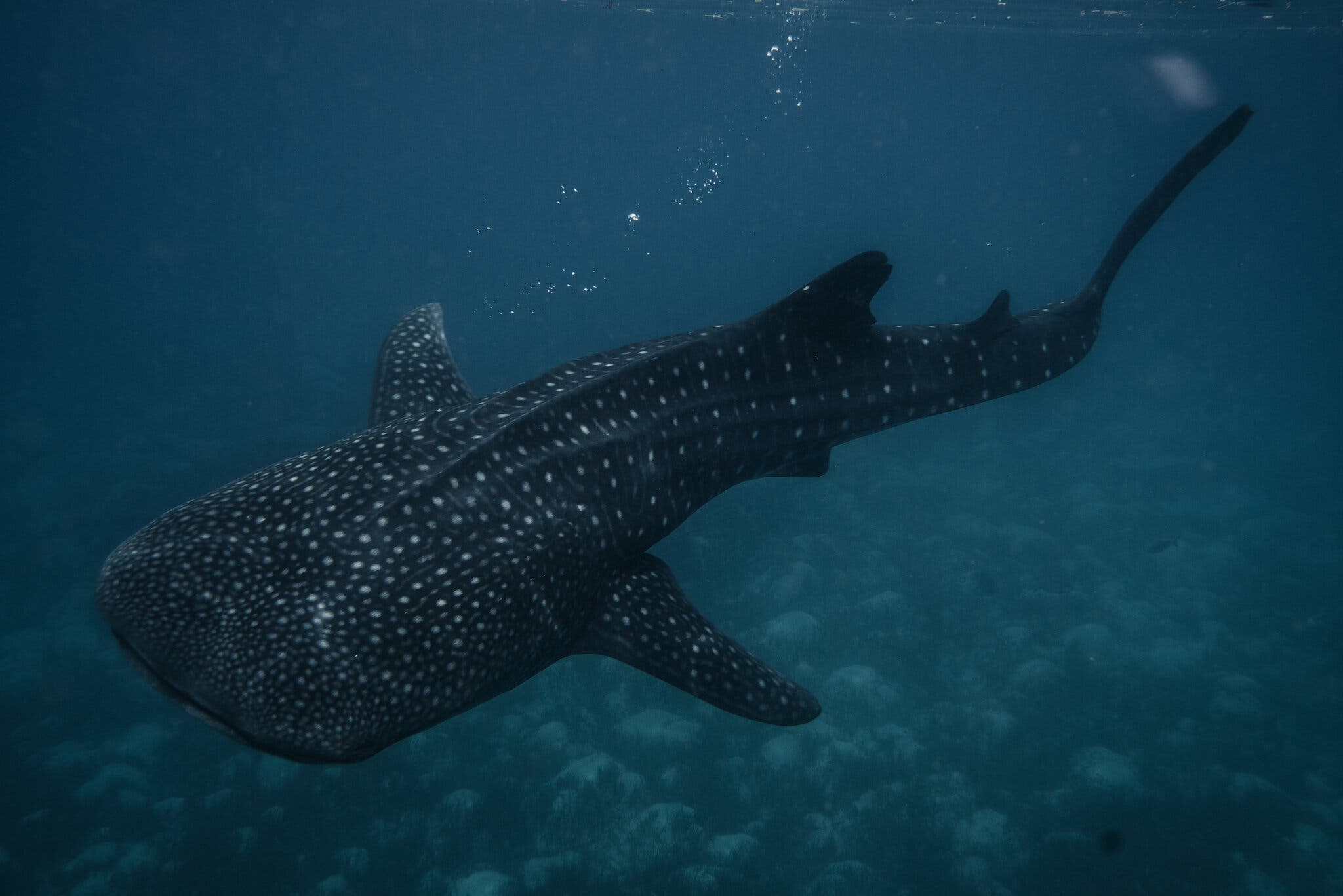
Conservationists say the hand feeding has changed whale shark behavior, including more damaging encounters with surface hazards.

The hand feeding practice helped guarantee a year-round presence of the sharks for the half a million tourists who came in 2019.
Of much greater and more immediate concern to Mr. Rendon are the effects of the Covid-19 pandemic. With no tourists arriving, hospitality workers, motorbike drivers and whale shark boatmen have been scraping around for alternative sources of income. Across town, doors and windows were boarded up.
“A nightmare,” Mr. Rendon said.
As the pandemic stretched on, many of the whale shark wardens started returning to their former — and much less lucrative — trades: fishing and farming.
Conservationists point to the pain Tan-Awan is now feeling as a good reason to shun the feeding model adopted here.
“In most locations globally where they’re not being provisioned, it’s seasonal,” Ms. Agustines said of the appearance of whale sharks. “So with that seasonality, there is an opportunity for having a different set of income so that the community isn’t completely reliant on just one type, in the event that something happens.”
Pandemic or not, the whale sharks have continued showing up, right on time, to be fed.

Selfies at Tumalog Falls are another highlight for travelers visiting the Oslob area.

A beach scene in Tan-Awan.
Mr. Rendon said the wardens had turned to different government bodies to raise money for the more than 60 pounds of shrimp needed each day. “If that goes,” Mr. Rendon said of the small amounts of government aid, “all of this will disappear.” 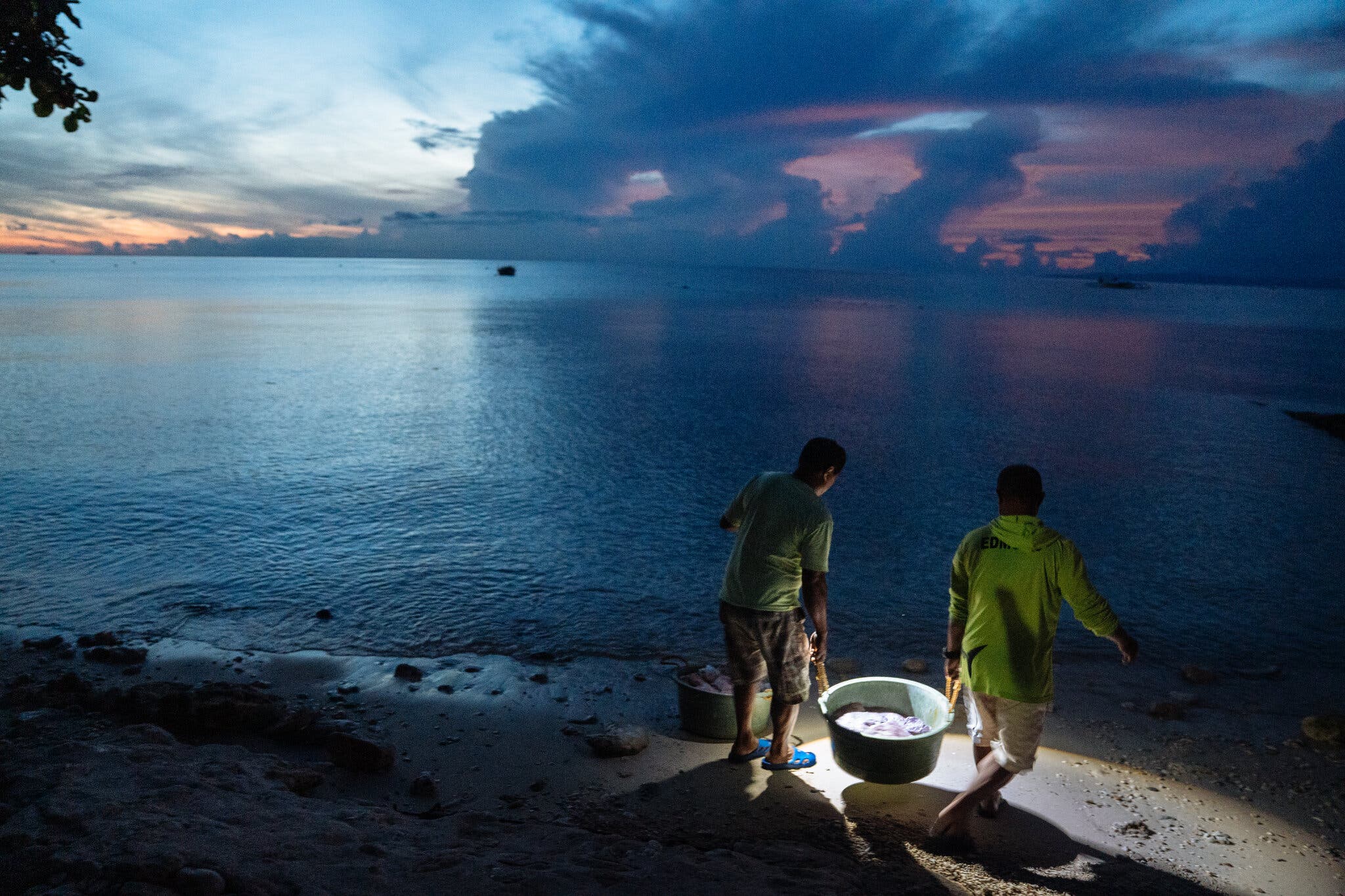
Sea wardens carrying uyap, a small shrimp used to feed the whale sharks, in Tan-Awan at dawn.
Source: https://www.nytimes.com/2021/10/24/world/asia/philippines-whale-shark-tourism.html
